Apple iPhone 6 vs HTC One (M8)
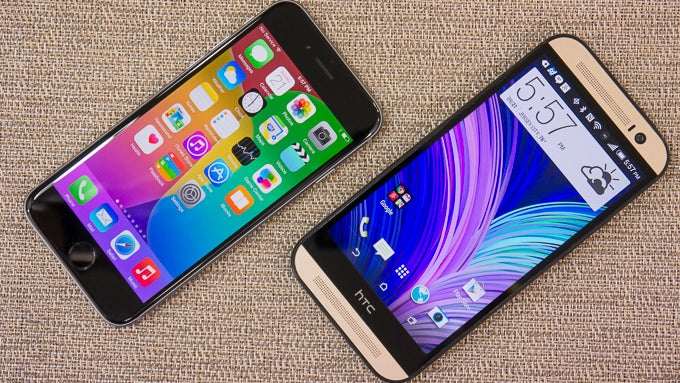
Introduction
Once again, it is iPhone season in gadgetland, but we're pretty sure that you're aware of that already. After all, our feed has been pretty generous on iPhone 6 news ever since the new model got officially announced. And it is easy to figure out why – the new iPhone is now on sale, and people are eager to learn what makes it tick. In fact, we've already gone over that in detail in our iPhone 6 review.
But our work is not yet done. It is time to stack up Apple's smartphone against its rivals, and one of them is the HTC One (M8). Now, this might not seem like a fair fight – it has been seven months since the One (M8) was announced, while the iPhone 6 is a brand new model. But knowing what HTC's flagship has to offer, we're confident that it won't go down without a fight.
Design
With “premium” written all over them, the iPhone 6 and HTC One (M8) stand in the same design league. Yet Apple's phone is lighter, thinner, and more compact.
Technically, the iPhone 6 and the HTC One (M8) are different on many levels, but when it comes to design, there's a number of striking similarities between the two. Firstly, they are both metal-made, as our fingers can instantly tell by the material's distinctive cold feel and smooth texture. Another trait making the two phones stand out is their immaculate, solid build quality – you pick up either one and you instantly know that you're handling a high-end product. Also, we can't help to notice the bands of plastic at the top and bottom sides of both phones' backs. These aren't there merely for decoration, you know. Antennas are placed along their lengths as plastic is better than metal at letting radio waves pass through. HTC has managed to blend these better with the design of the M8, however.
Size-wise, the iPhone 6 is taller and wider than any other iPhone before it, yet smaller and more compact than the HTC One (M8) (and most other flagship phones, for that matter). We find it neither too large, nor too small, and we can effortlessly navigate through its menus with a single thumb. Plus, the rounded sides and corners of the iPhone 6 make it fit nicely in the palm. As for its thickness, the new iPhone is just 0.27 inches (6.9 millimeters) thin, which is an impressive engineering achievement. The slim profile contributes to a stylish look, but it is somewhat spoiled by the protruding camera lens.
In comparison, the HTC One (M8) is slightly more uncomfortable to wield and carry in a pocket as it is larger than the iPhone 6 in every dimension. But we can't call its size a deal-breaking issue. The phone's proportions are easy to get used to, and its curved back allows for a nice, palm-filling grip. Besides, thanks to its tapered edges, the One (M8) creates the illusion of being slimmer than it actually is. It measures 0.37 inches (9.35 millimeters) at its thickest point, 35% more than the iPhone 6.
Unlike previous iPhone models, the iPhone 6 has its power/lock button placed on its right side. And that makes sense – having the key on the top would have made it harder to reach. In contrast, the lock key on the HTC One (M8) is on its top, which makes reaching it somewhat inconvenient. Also, we'd take the iPhone's elongated volume buttons over the M8's volume rocker any day. They're much easier to feel and respond with a satisfying click when pressed. And the iPhone's mute switch on the side is a much-appreciated little bonus.
Speaking of buttons, in the iPhone's signature home key is embedded the Touch ID fingerprint scanner, which is a very practical security feature. It allows one to use a fingerprint scan instead of a lock-screen PIN, for authorizing App Store purchases, and for confirming payments through Apple Pay – the company's upcoming payment service. The scanner itself is very accurate and takes no more than a second to read a fingerprint. As for the HTC One (M8), it doesn't have a fingerprint scanner, but it has a few awesome perks of its own. HTC's phone stands out with its pair of front-facing stereo speakers, which are much more suitable for listening to music than the iPhone's mono speaker. Also, unlike the iPhone 6, the M8 comes with an infra-red blaster, which enables the phone to be utilized as a universal remote control.
Display
Size and resolution place the One (M8)'s display ahead of the iPhone 6's Retina HD panel. But the latter is brighter and with slightly better color accuracy.
The average size of smartphone screens has grown tremendously over the past few years, and Apple is following the trend. On the iPhone 6 we find a 4.7-inch display, which is bigger than those on iPhone models before it. But the HTC One (M8) has the upper hand with its even larger, 5-inch display. And having a larger screen has its benefits – typing on it is easier, there's more room for your apps, videos are more convenient to watch, and so on. Now, we can't deny that we're content with the iPhone's 4.7-incher as it is suitable for any every-day task. But on the other hand, having those extra 0.3 inches that the M8 delivers is an advantage to anyone who doesn't mind the extra bulk.
Display resolution is another factor that puts the HTC One (M8) ahead of the iPhone 6. With its 1080 by 1920-pixel display, the former packs a whopping 441 pixels per inch, while the latter has 326 pixels per inch on its 750 by 1334-pixel screen. Undeniably, there's a difference in how much detail these two screens can produce, and the advantage is in favor of the M8. But it is far from significant. In fact, neither screen exhibits visible pixilation from a typical viewing distance. You need to look carefully from up close in order to notice that the iPhone's screen isn't as detailed as the M8's.
But size and resolution aren't the only factors determining whether a screen is good or not. Display technology and its characteristics must be taken into account as well. The iPhone 6 has an IPS LCD panel while the M8 has a similar, Super LCD 3 display - both are known for their wide viewing angles and accurate color representation. Our display measurements tend to agree – both the iPhone 6 and the HTC One (M8) produce a color temperature of under 7200 kelvins, which is close to the reference point of 6500K. In plain words, both displays exhibit just a slightly cold tone, but this inaccuracy is barely noticeable with a naked eye. The Delta E figures are in favor of the iPhone 6's display. This means that it produces more balanced colors across their various intensities, although the M8's screen is sufficiently accurate as well..
In addition, we measured the brightness output of both display panels. The iPhone 6 produces an impressive 606 nits of brightness, which ensures its excellent outdoor visibility, especially when the screen comes with an even better polarizer than the previous iPhone model. With its 490 nits of brightness, the HTC One (M8) lags behind the iPhone, but it still falls within the acceptable norms. As for their minimum brightness, the iPhone 6 can go down to as little as 7 nits of brightness, whereas the M8's minimum level stands at 16 nits. Therefore, the iPhone will go easier on your eyes when it is used in the dark.
Interface and functionality
With its smooth learning curve, reliability, and app selection, iOS 8 is the logical choice for millions, but the Android experience from HTC's perspective is not to be underestimated.
One of the key differences between the iPhone 6 and the HTC One (M8) is the software they come with. While the former runs Apple's own iOS operating system, HTC's top phone is an Android device. To be more specific, the iPhone ships with iOS 8, while the HTC One (M8) runs Android 4.4 – both the most recent versions of the respective platforms.
True to Apple's traditions, iOS 8 stands out with its simplicity and ease of use. It is regarded as a reliable platform that simply works, as millions of users would agree. At the same time, the latest release added a ton of much-appreciated features, including support for third-party widgets and keyboards, improved messaging application, actionable notifications, and much more. And let us not forget that the App Store hosts a rich selection of quality iOS applications and games.
As for the experience of using an HTC One (M8), the Android build it runs is far from its stock form. HTC has added quite a few tweaks of its own, including both visual and functional alterations. For example, a double-tap on the screen wakes the phone from stand-by, thus eliminating the need for the user to reach for the power key. And holding down either of the volume keys while holding the M8 in landscape orientation launches its camera, which is neat. Once on the home screen, you're given access to BlinkFeed, which is a personalized feed containing the latest updates from social networks that the user is logged into, along with news headlines on topics they're interested in. Overall, HTC's take on Android is a different one, but we do tend to like it.
Apple's stock on-screen keyboard has grown smarter with iOS 8. Learning as you type, it provides word suggestions on the go, and while the feature has been available on Android for a long time, it is great to see it landing on iOS as well. In terms of accuracy, the keyboard is more reliable now that it is spread across a wider screen area. But somehow we feel more satisfied by the M8's on-screen keyboard. Being wider makes it more comfortable to type on, and since its keys contain shortcuts for symbols and digits, we don't need to switch between layouts back and forth.
Processor and memory
Powerful hardware and smooth experience put the iPhone 6 and HTC One (M8) in the same performance league.
Looking at specs alone, the iPhone 6 might seem weaker than the One (M8). Apple's smartphone stands its ground with the in-house-designed A8 system-on-chip solution, which features 64-bit architecture and is built on a power-efficient, 20-nm process. Further technical details include a 1.4GHz dual-core CPU paired with 1GB of RAM and a PowerVR GX6650 GPU. In comparison, the HTC One (M8) is powered by one of Qualcomm's most powerful chips, the Snapdragon 801, model MSM8974-AB, along with 2GB of RAM. Its quad-core Krait 400 CPU can run at speeds of up to 2.3GHz.
All these figures and specifications seem to lose any meaning once you actually start using the iPhone 6, however. The phone is really fast and responsive due to the fact that software and hardware work hand-in-hand to deliver a buttery-smooth user experience. Apps launch instantly and lag is virtually absent. As for the HTC One (M8), it is not a sluggish phone at all. In fact, it is one of the better-optimized Android phones around, with excellent performance, be it while playing games or simply checking your email. If responsiveness is what you value, then the M8 won't disappoint either.
The base iPhone 6 model comes with 16GB of built-in storage, and so does the HTC One (M8). That's not terrible by any means, but at this point in time, a high-end phone should be more generous in terms of storage space. If you want a more spacious iPhone model, you have the option to buy a 64- or a 128-gigabyte model for an additional $100 or $200 respectively. Storage upgrades are cheaper with the M8, we must point out. HTC's phone has a microSD card slot, and a brand-name 128GB card can be had for about $100.
Internet and connectivity
A hassle-free web-browsing experience from both phones.
No surprises here, folks! Safari, the default web browser on the iPhone 6, loads even complex web pages in no time and handles navigation gestures without any stuttering. Zooming and scrolling are buttery-smooth, as is usually the case with Apple devices. Text is slightly inflated which makes it easier to read without having to zoom in. Similarly, the HTC One (M8) renders even heavy web pages swiftly and doesn't lag even when pushed. Its stock web browser could use some UI improvements, such as a better tab switching interface, but the good news is that many well-made alternatives are available from the Play Store. Chrome, in particular, comes pre-installed on the M8 and serves as an excellent substitute for the stock option.
Connectivity-wise, the iPhone 6 comes with support for 16 LTE bands, which makes it compatible with most LTE networks world-wide. The HTC One (M8), on the other hand, supports just four of the popular LTE bands in use, meaning that using LTE abroad could be an issue. Other than that, both the iPhone 6 and the HTC One (M8) support Wi-Fi 802.11ac, GPS+GLONASS, and Bluetooth 4.0 LE. We must point out that while both phones come with NFC, the iPhone 6 will utilize the feature solely for contactless payments, while the M8 can use its NFC antenna to pair with other devices and to transfer data over Android Beam.
Camera
HTC still has some catching up to do. The iPhone 6's 8-megapixel camera is much better than the One (M8)'s UltraPixel one in almost any way.
Things aren't looking good for the HTC One (M8). Having compared it against the iPhone 5s on numerous occasions, we doubt that its camera performance would come even close to that of the iPhone 6's camera, but we have to give it a fair chance anyway.
So here's how things stand on a technical level. HTC's flagship relies on what it markets as an “UltraPixel” camera – one with larger-than-average pixel size of 2 microns, 1/3" sensor size and a wide f/2.0 aperture. The actual resolution of the snapper is only 4 megapixels at a 16 by 9 aspect ratio, which is sufficient for the amateur photographer's needs, but underwhelming when compared to all the other flagship phones, most of which have 13MP or more to offer. The dual LED flash is of the dual-tone variety for more natural lighting when used. Optical image stabilization is absent and software stabilizing algorithms are used instead. As for that secondary camera on the phone's back, it is there to measure depth information. This allows certain effects to be applied to the photos after they've been taken.
On the back of the iPhone 6 we find an 8MP camera with a True Tone LED flash similar to the M8's. 1.5-micron pixels populate the sensor, and an f/2.2 aperture lets light through. We must point out that the iPhone's camera is one of the few utilizing phase-detection auto-focus (or what Apple calls Focus Pixels), which is considered faster than the contrast-detection auto-focus technique typically used in smartphones and point-and-shoot cameras. As the case is with the One (M8), the iPhone's camera has software image stabilization instead of optical one.
Launching the iPhone 6 camera app takes us to a familiar interface. It is well laid out and simple to use, but definitely not lacking in useful features. The shutter button is big and easy to press, and you can use the volume button instead if you prefer. There's a very convenient Auto HDR mode, holding down the shutter takes a burst of images, and experienced photographers are given manual control over the focus and exposure of the image. Video modes include 1080p at 60 fps and 720 at up to 240 fps for impressive slow-motion clips.
The HTC One (M8) comes with a camera app that's a bit more feature-rich. Similarly, it provides the photographer with focus and exposure control, burst mode, and an HDR option, but it goes beyond these with its full manual controls. Color temperature, focus, ISO, shutter speed, and exposure can be controlled independently. Thanks to the secondary camera, one can apply some blur effects to the background after the image has been captured. These look nice in some scenes, especially in portraits, but in all honesty, we doubt you'll be using them often. As the iPhone 6, the M8 can take 1080p video at 60 frames per second and 120 fps slow-motion videos.
Okay, enough theory. Time to take a look at some real-life photos side by side. To no surprise, the iPhone 6 captures superior details in its images thanks to the higher resolution of its camera. You can zoom in further and crop relatively larger areas of the frame. But that's not as big of an issue holding the M8's camera back as is its tendency to boost colors and saturation too much. In scenes involving bright colors, it is easy to see how their saturation is increased to a point where they appear unnatural. Sure, given the right conditions and with some involvement on the user's side, HTC's flagship can take a decent photo, but overall, we'd take the iPhone 6's camera any day.
When taking photos at night, the iPhone 6 tends to leave a bit of noise in its images, whereas the HTC One (M8) suppresses it through its camera software. Colors appear more natural in the iPhone's photos, while the M8 aims to capture them in a more vibrant manner. Personal taste would matter here when picking a favorite, although our vote would go for the iPhone.
Interestingly, the HTC One (M8) outpaces the iPhone when it comes to front-facing camera quality. The former is equipped with a 5MP camera with a wide angle lens, while the latter has a 1.2MP front-facing camera. Sure, the iPhone's selfies are decent, to say the least, but the HTC One (M8) is the one taking better self shots.
Looking at 1080p video samples from the two phones, it quickly becomes clear that the iPhone 6 is the better shooter. Its videos have great details and colors, not to mention that the image stabilization works wonders. The sound could have been a bit clearer, however. As for the HTC One (M8), the excessive contrast spoils its videos and the software image stabilization doesn't seem to be working that well. At least the M8 is better at capturing sound clearly.
Multimedia
With its larger screen and stereo speakers, the One (M8) is a multimedia powerhouse.
Anyone who has ever used an iPhone should be feeling right at home with the iPhone 6's music player. It is a full-featured music player, with album art, lock screen controls, and a built-in streaming service, namely iTunes Radio. It has its shortcomings, however, such as the fact that you have to hide the app and go to the phone's settings menu to switch to a different equalizer preset. And managing music is done solely through an app like iTunes, which is limiting. Why can't we simply delete an album from our phone when we need extra storage space?
The music player on the HTC One (M8) is a lovely one. It can stream from a media server if you have one set up at home, it can automatically download album art if it happens to be missing, and the built-in visualizer delivers eye-candy to go along with your music. Plus, you can set a given song as a ringtone with a tap of a button. Shockingly, an equalizer is missing. You only have the option to turn the BoomSound audio enhancement on or off.
As we mentioned earlier, the HTC One (M8) comes with front-facing stereo speakers, and these make a difference when watching videos or playing movies. Needless to say, the experience is much more enjoyable. On the iPhone 6 there's a single loudspeaker at the bottom, and while it is decently loud, we find the M8's BoomSound speakers much more suitable for our audio needs.
The built-in IR blaster on the HTC One (M8) is used for controlling TVs and set-top boxes straight from the handset. That is done through the pre-loaded TV application, and setting it up is a hassle-free process. It would have been nicer if the blaster was compatible with other appliances, however, such as air conditioners and stereos.
The video application on the iPhone 6 plays back whatever videos you've purchased or transferred via iTunes, and the larger-than-before screen is quite suitable for enjoying your favorite TV shows. But the M8 is even better suited for watching videos thanks to its larger, high-res screen and higher sound quality. But instead of a dedicated app, you have to use the gallery app on the M8 for playing videos.
Call quality

Battery life
Inside the iPhone 6 is tucked a 1810mAh battery, which is considerably smaller than the HTC One (M8)'s 2600mAh cell. That's why it comes as no surprise that the latter got a higher score at our custom battery benchmark. HTC's flagship endured through a total of 7 hours and 12 minutes of usage, while the iPhone died after only 5 hours and 22 minutes of testing. As expected, manufacturer data lines up with our battery test results. The iPhone 6 is rated for 14 hours of talk time, while the M8 can last though 20 hours of talk time on a 3G network. On a related note, both phones' batteries are non-removable.
Conclusion
It is never easy to pick a favorite among phones that have so much to offer. One thing's certain, however – whether you pick the iPhone 6 or the HTC One (M8), you will receive your money's worth in exchange. You just need to know what your priorities are when making the choice between these two great models.
When it comes to design, the two phones stand in the same league with their meticulously crafted metal bodies. But the iPhone 6 is definitely the more compact one with its slim and lightweight construction. The M8 might be larger and heavier, but its offers a bigger screen with higher resolution and a pair of great front-facing speakers.
Taking the potent hardware specs of these phones into account, it is safe to say that both the HTC One (M8) and the iPhone 6 will be relevant for at least a couple more years. The two are definitely capable of handling their respective operating systems with ease, delivering a hassle-free user experience.
If you tend to take photos often, then the iPhone 6 is more suitable for your needs as it packs the better camera. Not that the M8's snapper is bad, but it just doesn't meet the high expectations one would have for such a premium product. If you take a lot of selfies, however, we suppose you'll be quite pleased with the M8's 5MP front-facing camera.
And as far as battery life goes, the HTC One (M8) has a much bigger battery, which ensures its superiority against the iPhone 6 in that respect. As power-efficient the new iPhone might be, our testing shows that it can't quite reach the longevity of HTC's flagship.






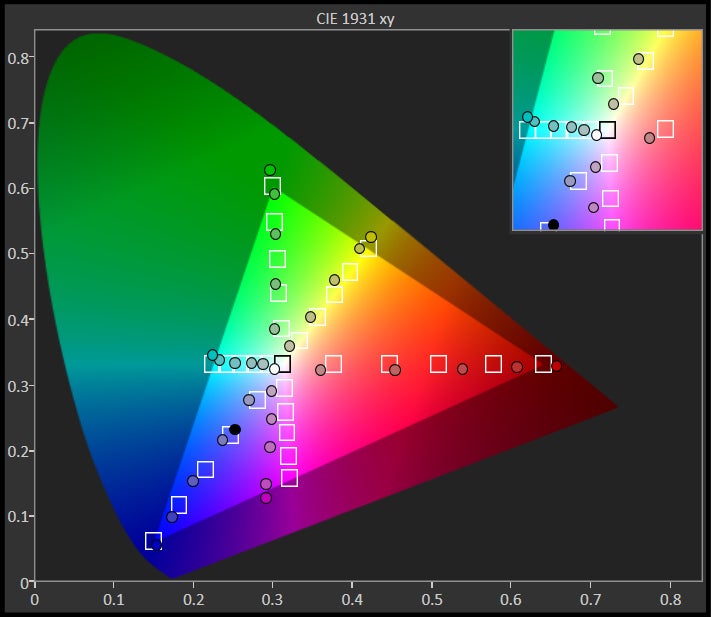










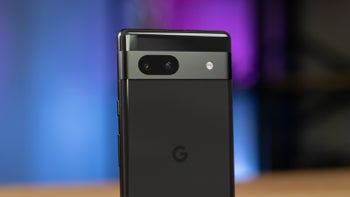
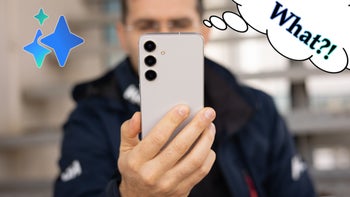
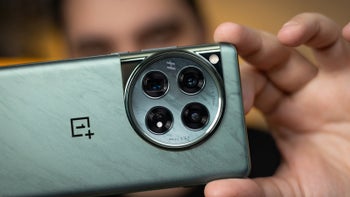
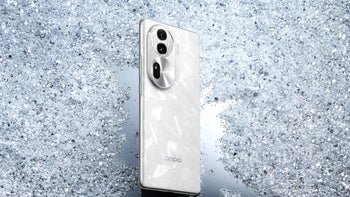

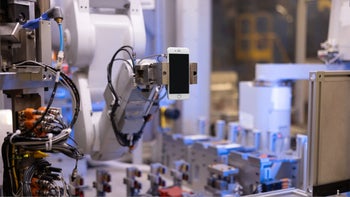






Things that are NOT allowed: